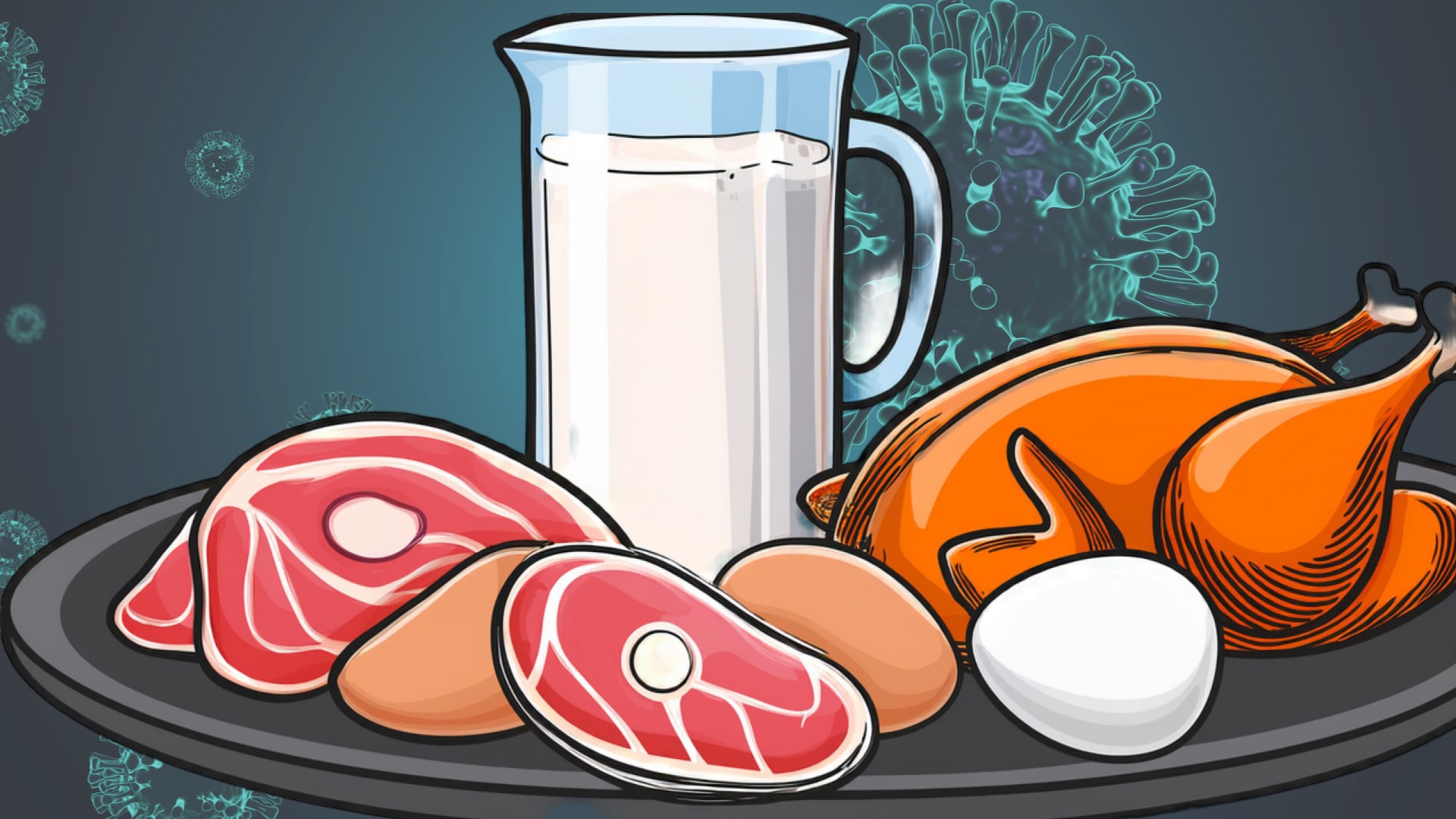Pathogens in the Food Industry

The food sector is a critical area for human health and carries a great responsibility for both consumer safety and public health. Microorganisms in food, especially pathogens, can cause serious health problems. Pathogens are one of the main causes of foodborne illnesses, and therefore food safety is directly related to controlling these microorganisms.
Various pathogens such as bacteria, viruses, fungi and parasites can be found in food products and can multiply rapidly under unsuitable conditions and cause infections in humans. Foodborne illnesses occur when pathogens enter the body through contaminated food. The most common pathogens in the food sector are bacteria and viruses. Both groups can cause food spoilage, poisoning and infections. We can list the most common pathogen types encountered in the food sector as follows:
1. Bacteria
•Salmonella: Found in raw or undercooked poultry, eggs, dairy products and meat. Salmonella infection (salmonellosis) causes nausea, diarrhea and abdominal pain.
•Escherichia coli (E. coli): Found in raw or undercooked beef and contaminated vegetables. Some strains of E. coli can cause severe gastrointestinal infections.
•Listeria monocytogenes: Found in frozen and processed foods, soft cheeses, and unpasteurized dairy products. Listeria is especially dangerous for individuals with weakened immune systems.
•Clostridium botulinum: This bacteria, which can be found in canned foods, causes a fatal disease called botulism.
2. Viruses
•Norovirus: Usually transmitted through contaminated water or food. It causes symptoms such as severe nausea, vomiting, and diarrhea.
•Hepatitis A: Can be found in unhygienic foods, especially shellfish. It can cause a long-lasting infection that damages the liver.
3. Parasites
•Toxoplasma gondii: Can be found in undercooked meats and contaminated water. It causes an infection called toxoplasmosis and is particularly dangerous for pregnant women and individuals with weakened immune systems.
•Giardia lamblia: It is transmitted through contaminated water or contaminated food. It causes severe diarrhea and abdominal pain.
4. Fungi
•Aspergillus flavus: This fungus, which can be found in grains, nuts and spices, produces a substance called aflatoxin, which is dangerous to human health.
Food pathogens can also spread in different ways and various sources of contamination can occur during food production, processing and consumption:
1. Cross-contamination: Pathogens can be transmitted as a result of direct contact of contaminated foods, such as raw meat, with clean foods. This usually occurs in kitchens and production facilities where hygiene rules are not followed.
2. Inadequate cooking: Most pathogens are destroyed at high temperatures. However, inadequate cooking of foods can allow these microorganisms to survive and infect the human body.
3. Use of dirty water: Dirty water used in food production or washing vegetables can cause pathogens to contaminate food.
4. Lack of hygiene: Failure of employees to comply with hygiene rules during production or preparation, especially not cleaning their hands sufficiently, can lead to the spread of foodborne pathogens.
So what are the ways to protect against these pathogens?
Controlling pathogens in the food sector is a necessity for both producers and consumers. This helps prevent serious health problems and protect public health. The main measures to be taken to combat these pathogens are as follows:
1. Compliance with Hygiene Standards: Employees in food production and processing facilities must strictly comply with personal hygiene rules. Using gloves, regular hand washing and cleaning surfaces are critical to prevent cross-contamination.
2. Proper Cooking of Foods: Cooking at high temperatures destroys most bacteria and viruses. It is recommended that meat products in particular be cooked until their internal temperature reaches 70°C.
3. Storage Conditions: Storing foods at the right temperatures prevents pathogens from multiplying. Cold foods should be stored below 4°C, and hot foods above 60°C.
4. Preventing Cross-Contamination: Different cutting boards and kitchen utensils should be used to prevent contact between raw and cooked foods. Raw meat should be kept separate from cooked foods and should be packaged well during storage.
5. Monitoring the Supply Chain: Food safety should be controlled at all stages from production to consumption. Strict quality control measures should be implemented in the supply chain and all processes should be monitored to prevent pathogen transmission.
6. Vaccination and Education Programs: Regular training of food sector employees on pathogens and food safety can increase awareness and prevent errors. In addition, vaccination against certain pathogens plays an important role in preventing diseases.
The food sector has a great responsibility in controlling pathogens and ensuring food safety. Pathogens in food can seriously threaten both individual health and public health. Therefore, basic precautions such as compliance with hygiene standards, proper cooking and storage conditions play a critical role in preventing foodborne diseases.
Combating pathogens is not only the responsibility of food producers but also consumers. Food safety can be ensured at both the production and consumption stages by acting with the right information and awareness.